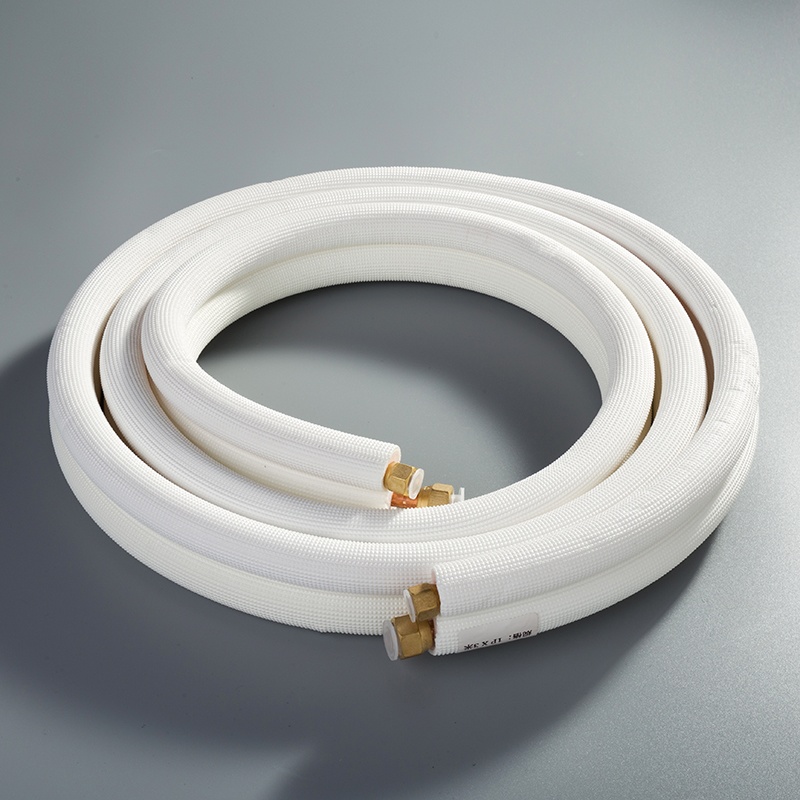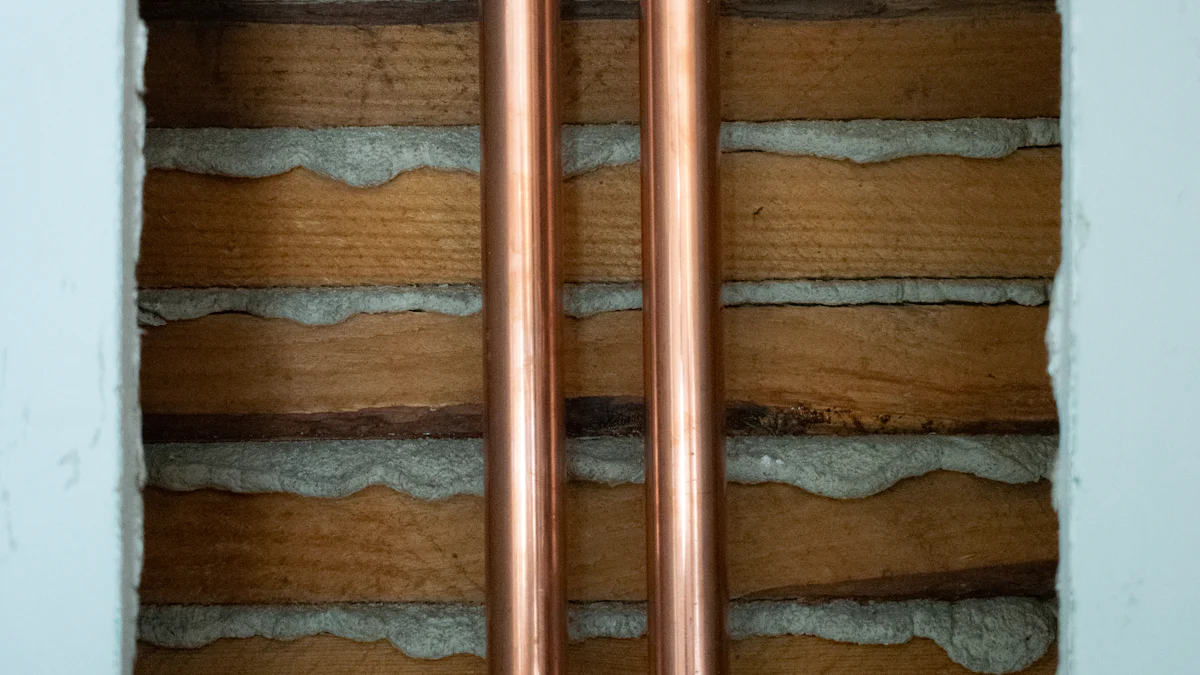Discover the Best Pipe Insulation for Your Home

Pipe insulation plays a crucial role in reducing heat loss and increasing energy efficiency in homes. By creating a thermal barrier, pipe insulation prevents heat transfer to the surroundings, resulting in significant energy savings. With up to a 70-90% reduction in heat losses compared to uninsulated pipes, the benefits are clear. This blog will provide an insightful overview of the different types of pipe insulation available, highlighting their unique advantages and best applications. Understanding the importance of proper pipe insulation is key to maximizing energy efficiency and reducing utility costs.
Types of Pipe Insulation

When considering pipe insulation for your home, it's essential to explore the different options available to find the best fit for your needs. Here are three common types of pipe insulation that offer unique benefits:
Phenolic Foam
Phenolic Foam Pipe Insulation is a cost-effective choice known for its low thermal conductivity and enhanced fire resistance compared to other foam plastics. This type of insulation is ideal for below ambient to cold systems and provides superior heat loss prevention. It is commonly used in industrial applications due to its exceptional energy efficiency.
Heat Loss Prevention
Phenolic foam insulation stands out for its ability to prevent heat loss effectively, making it an excellent option for maintaining optimal temperatures in various settings.
Best Applications
Industrial heating, ventilation, and air conditioning systems
Petrochemical and maritime sectors where temperature control is critical
Rubber Insulation
Also known as Elastomeric Foam Insulation, rubber pipe insulation offers flexibility, ease of installation, and excellent moisture resistance. It excels in preventing freezing by providing a snug fit that minimizes heat loss.
Freezing Prevention
Rubber insulation adapts well to different pipe diameters, ensuring a secure seal that helps prevent freezing during cold weather conditions.
Best Applications
Residential plumbing systems
Areas prone to low temperatures where freezing pipes are a concern
Foam Plastic Insulation
Foam plastic insulation is commonly used in commercial settings due to its lower thermal conductivity and higher operating temperature compared to rubber insulation. It provides reliable protection against heat loss while offering ease of installation.
Commercial Use
This type of insulation is preferred for commercial and industrial applications where consistent thermal performance is essential.
Best Applications
Large-scale heating and cooling systems
Industrial facilities with high-temperature requirements
By understanding the unique advantages of each type of pipe insulation, you can make an informed decision based on your specific needs and requirements.
Benefits of Pipe Insulation

Energy Efficiency
Insulating pipes is a fundamental practice that significantly contributes to enhancing energy efficiency and reducing heat loss. Pipe insulation serves as a protective barrier, ensuring that the heat within the pipes remains at optimal levels. This not only results in cost savings for homeowners but also has a positive impact on the environment. By minimizing heat loss through effective insulation, households can experience substantial reductions in their energy bills while simultaneously decreasing their carbon footprint.
Cost Savings
One of the primary advantages of pipe insulation is its ability to generate cost savings for individuals. By preventing heat loss and maintaining consistent temperatures, insulated pipes require less energy to function efficiently. As a result, homeowners can enjoy lower utility bills without compromising on comfort or convenience. The initial investment in quality pipe insulation pays off in the long run through reduced energy consumption and increased financial savings.
Environmental Impact
The environmental benefits of pipe insulation are equally significant. By conserving energy and reducing heat wastage, insulated pipes contribute to overall sustainability efforts. The controlled temperatures facilitated by proper insulation lead to decreased greenhouse gas emissions and promote eco-friendly practices within households. Embracing pipe insulation not only benefits individual homeowners but also supports broader conservation goals aimed at preserving natural resources for future generations.
Pipe Protection
In addition to enhancing energy efficiency, pipe insulation plays a crucial role in protecting pipes from external elements and potential damage. Properly insulated pipes are less susceptible to freezing during cold weather conditions, ensuring continuous water flow and preventing costly repairs due to burst pipes.
Preventing Freezing
Insulating pipes effectively prevents freezing by maintaining consistent temperatures even in low-temperature environments. This proactive measure safeguards plumbing systems from the risks associated with frozen pipes, such as water blockages and structural damage.
Reducing Wear and Tear
By providing an extra layer of protection, pipe insulation helps reduce wear and tear on plumbing systems over time. Insulated pipes experience less stress from temperature fluctuations, resulting in prolonged durability and fewer maintenance requirements for homeowners.
Comfort and Safety
Beyond energy efficiency and pipe protection, pipe insulation contributes to enhanced comfort levels and improved safety within residential settings. Consistent water temperatures ensure a reliable supply of hot water for daily activities, while fire safety measures offer peace of mind to homeowners.
Consistent Water Temperature
Insulated pipes maintain consistent water temperatures throughout the plumbing system, eliminating fluctuations that can affect daily routines. Whether it's for showering or washing dishes, having reliable access to hot water enhances comfort and convenience for household members.
Fire Safety
In addition to thermal benefits, pipe insulation provides fire safety advantages by reducing the risk of accidental fires related to overheated plumbing systems. The insulating materials act as a protective barrier against extreme temperatures, minimizing potential fire hazards within homes.
Choosing the Right Insulation
Assessing Your Needs
To determine the most suitable pipe insulation for your home, it is essential to assess your specific requirements based on pipe material and climate considerations. Different types of insulation materials offer varying properties and applications, each catering to distinct needs.
Pipe Material
The type of material used in your pipes influences the choice of insulation required. For instance, mineral fibre insulation is ideal for pipes with specific temperature control needs, while foam insulation provides excellent thermal resistance for various pipe materials. Understanding the composition of your pipes enables you to select an insulation type that complements their characteristics effectively.
Climate Considerations
Considering the climate conditions in your region is crucial when selecting pipe insulation. Areas prone to extreme temperatures may benefit from phenolic foam insulation due to its superior heat loss prevention capabilities. On the other hand, fiberglass insulation offers versatility and durability in different climates, making it a reliable choice for varying environmental conditions.
Installation Tips
Proper installation of pipe insulation is key to maximizing its effectiveness and ensuring long-term benefits for your home. Whether opting for professional installation services or choosing a DIY approach, following essential guidelines can enhance the performance and longevity of your insulated pipes.
Professional vs. DIY
While professional installation guarantees expertise and precision, opting for a DIY approach allows homeowners to take control of the process and potentially reduce costs. Hiring professionals ensures accurate measurements and seamless application, while DIY projects provide flexibility and customization options based on individual preferences.
Maintenance and Inspection
Regular maintenance and inspection of pipe insulation are vital to detect any signs of wear or damage promptly. Conducting routine checks on the condition of the insulation helps prevent heat loss and ensures optimal energy efficiency within your home. By monitoring the integrity of the insulation regularly, homeowners can address any issues early on and maintain a well-insulated piping system.
By evaluating your specific needs related to pipe material and climate considerations, along with following proper installation tips, you can make informed decisions when choosing the right pipe insulation for your home. Prioritizing these factors enhances energy efficiency, reduces heat loss, and contributes to a more comfortable living environment overall.
Pipe insulation plays a vital role in reducing heat loss and maintaining controlled temperatures within plumbing systems.
By preventing heat gain and loss, insulated pipes ensure energy efficiency and lower utility bills for homeowners.
Implementing pipe insulation not only minimizes inefficiencies but also enhances comfort levels by providing consistent water temperatures.
Take action today to reap the benefits of reduced energy consumption, cost savings, and a more sustainable living environment.
See Also
Exploring Superior Copper Pipe Fittings for Plumbing Needs
Exploring Great Savings on 1/2 Inch Copper Pipes
Insider Tips: Enhance Air Conditioner Efficiency with Copper Pipes
Key Advantages of 1/4 3/8 Twin Copper Pipe Coils with White PE Insulation


